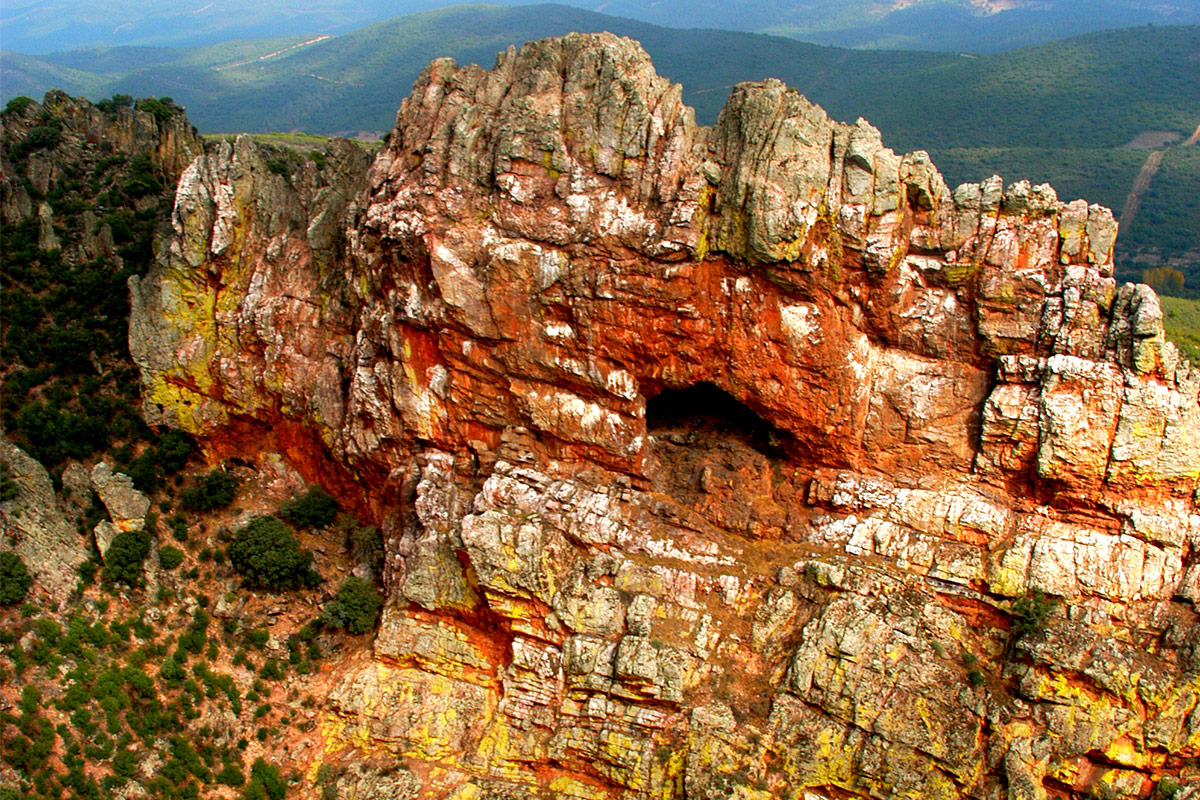These quartzite walls have their origin in the Lower-Middle Ordovician rocks (more than 470 million years ago), having undergone important tectonic movements, so that, despite being very compact and hard rocks, they are also very fragile and are highly broken up, with numerous rracturures. These fractures, unlike faults, have no displacement of the resulting blocks.
Ruptures along the stratification planes are the cause of numerous rock slides that have given rise to the striking caves and steep cliffs on the slopes of this gorge.
The Estrecho de la Peña is “a window between two worlds”: the Ediacaran-Lower Cambrian and the Ordovician, both separated by a prolonged period of emersion with continental deposits, followed in the Ordovician by a marine transgression. That is to say, the progressive advance of the seas over the land that emerged during the Cadomian orogeny (Ediacaran-Cambrian) making possible the new deposit of materials during the following periods, which, in turn, will later emerge when they are folded during the Variscan orogeny.
We can observe at the base of the gorge the shaly Ediacaran rocks, folded by the Cadomian orogeny, and above them conglomerates and quartzite rocks of the Ordovician, folded during the Variscan orogeny. In geological terms, this separation between strata of different nature and folded by different orogenies is called an angular and erosional unconformity.
In this geosite you can observe some of the most characteristic trace fossils (burrows, galleries, etc. left by ancient organisms that have not fossilised) of the Armorican Quartzite, especially Cruziana. They are attributed to traces of displacement – and probably feeding – of arthropods with appendages (legs) such as trilobites. These traces appear not only when the animal moved on the original surface, but also when it moved within the sediments. You can also see these interesting fossils at various places in the Geopark, but here they can be seen in cross-section (view), which is very rare.
The animal was burrowing into a layer with nutrients (mud in this case) and the upper layers (sand) were falling behind it, filling in and casting the excavation.

